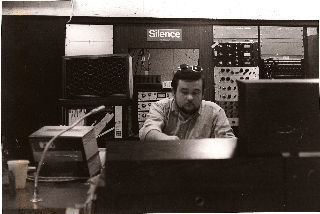 | ||
Ac dc live from the atlantic studios 1977 full jam
Atlantic Studios was the recording studio of Atlantic Records. It was located at 1841 Broadway (at the corner of 60th Street), in New York City. According to the address written in the original liner notes (1957) of Charles Mingus' The Clown, it was initially located at 157 W 57th Street. The American record label first recorded in these studios in November 1947. The studio was the first to record in stereo due to the efforts of Tom Dowd.
Contents
- Ac dc live from the atlantic studios 1977 full jam
- Ac dc atlantic studios new york ny usa 07 12 1977 best sound
- The Studios
- Founders of Atlantic Records
- Tracks
- Albums
- Artists
- Mastering
- References
Ac dc atlantic studios new york ny usa 07 12 1977 best sound
The Studios
Tom Dowd in the early days of Atlantic Records would do recording at the offices. At night the desks would be pushed against the walls and singing groups would gather around one or two microphones in the inner office and he would be in the outer office recording singing groups with a small mixer and a tape recorder.
In 1958 Tom Dowd convinced Ampex (and Jerry Wexler) to sell the second Ampex eight track tape recorder ever manufactured to Atlantic Studios putting Atlantic ahead of other studios for many years.
In 1959 Atlantic Records and Atlantic Studios moved to 1841 Broadway. The studios were in the co-joined building at 11 West 60th Street. When Atlantic Records moved to 75 Rockefeller Center in the mid 1970s, Atlantic Studios expanded to occupy the entire 2nd floor of both buildings. In the early 1980s the studios expanded to the 3rd floor.
The studio complex eventually consisted of two studios, a mix room, two disk mastering rooms, two editing and tape copy rooms, two digital transfer rooms, a quality control room for Atlantic Records manufactured products (45s, LPs, Cassettes, 8-Tracks and CDs), tape library (tape vault offsite) and several offices and lounges.
Studio A - approximately 50' x 30' x 15', control room 20' x 15', and a later a Hidley redesign 24' x 24'. The control room had two generations of MCI consoles (the "black" console and then a 528), later the Hidley control room had a custom NEVE. Monitors were Altecs, UREIs and Hidleys. Tommy Dowd early on installed variable acoustic sound traps that affected both the low frequency absorption and the reverberation time in the studio.
Studio B - approximately 30' x 15' x 15', control room 15' x 15'. Consoles were MCI 528 and then NEVE and monitoring was Altecs and then UREIs.
Mix Room - approximately 15' x 12', later a new repositioned mix room and vocal booth 20 x 18'. Consoles were a built-in-house 16 channel passive summing mixer, then original Studio A MCI "black" console, then a third MCI 528 purchased from Criteria Studios and in the new mix room an SSL. Monitoring was Altecs and later in the SSL room ??.
Mastering Rooms - Neumann and Scully Disk Cutting systems, and Altec monitoring.
Tape Recorders - Ampex, Scully, MCI, Studer, and Sony.
Microphones - Neumann, AKG, Sennheiser, Electro-Voice, Sony, Shure, and RCA.
Outboard Equipment - Dolby, UREI (Textronix), Pultec, Lang, Spectra-Sonic, Eventide, Allison Research, Audio & Design, Ltd and Fairchild.
Reverberation - An echo chamber was built in the basement of 1841 Broadway but it was rarely used in later years, primarily it was EMT analog and digital reverberation units.
The studios closed in 1991 and Atlantic Records' in-house digital and analog production rooms and the tape library were re-located to West 54th Street.
Founders of Atlantic Records
Tracks
Chronological list, with album, artist, and recording dates :
Albums
Chronological list with artist, and recording dates :
Artists
Alphabetical list of main artists :
